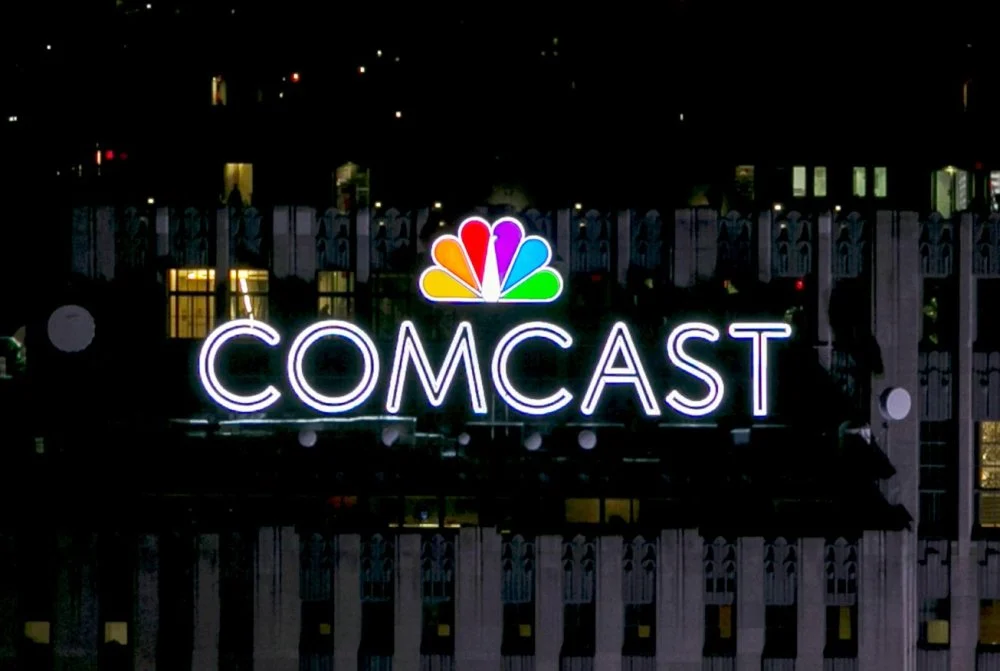Comcast Corporation, a name synonymous with connectivity and entertainment, has established itself as a global media and technology powerhouse, reaching millions of customers, viewers, and guests worldwide. Founded in 1963 by Ralph J. Roberts, Julian A. Brodsky, and Daniel Aaron in Tupelo, Mississippi, this American multinational conglomerate, headquartered in Philadelphia, Pennsylvania, boasts a rich history and a diverse portfolio of services that have fundamentally shaped the way we experience media and technology today.
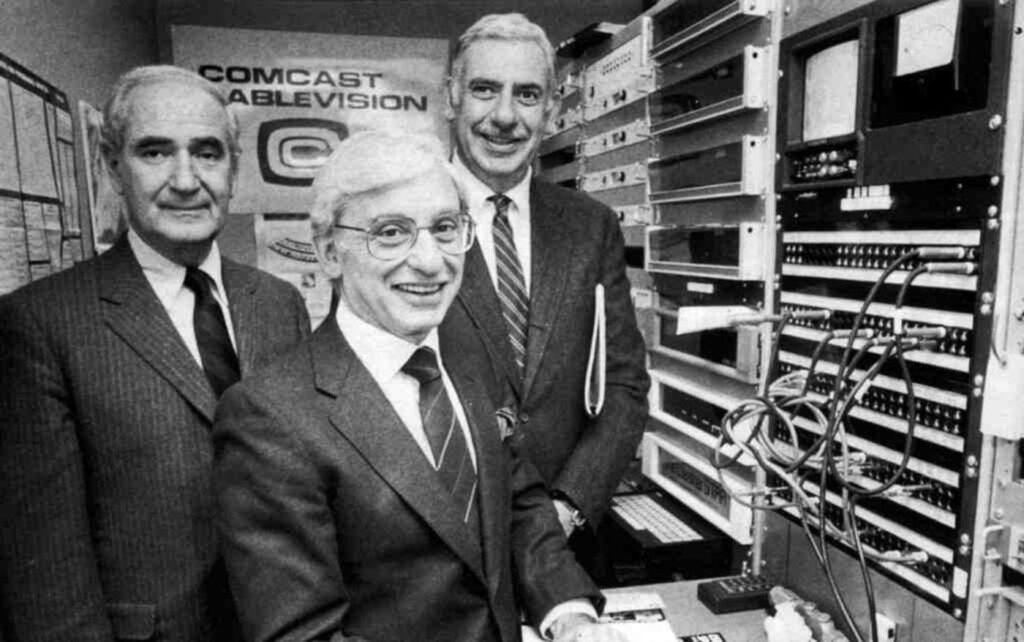
Dominating the American telecommunications landscape, Comcast holds the title of the largest home internet service provider and the second-largest cable TV company by subscribers in the United States, boasting an impressive 29.7 million and 25.5 million customers respectively as of December 31, 2023. Additionally, it ranks as the third-largest pay-TV company and third-largest home telephone service provider in the nation, serving 25.2 million and 11.5 million customers respectively. This extensive reach across various sectors solidifies Comcast’s position as a crucial player in the industry, providing an essential infrastructure that connects millions of Americans to the digital world and their entertainment desires.
Beyond its domestic reach, Comcast extends its influence through NBCUniversal, a subsidiary acquired in 2011 for a staggering $13.8billion. This acquisition marked a pivotal moment in Comcast’s history, transforming it from a primarily telecommunications company into a media and entertainment giant. NBCUniversal, a global leader in the media and entertainment industry, boasts a diverse portfolio of assets including:
- NBC and Telemundo, two major broadcast television networks offering news, entertainment, and sports programming.
- Universal Pictures, a film studio responsible for producing and distributing some of the world’s most popular and critically acclaimed movies.
- Universal Cable Productions, a television production company behind popular shows like “Monk” and “The Office.”
- News organizations like NBC News, CNBC, and MSNBC, providing viewers with in-depth news coverage and analysis.
- Theme parks and attractions like Universal Studios Hollywood and Universal Orlando Resort, offering immersive experiences for families and individuals worldwide.
This powerful combination allows Comcast to not only deliver the infrastructure for connectivity but also curate the content enjoyed by millions. From providing high-speed internet access to streaming services like Peacock and Xfinity Stream, Comcast offers a comprehensive package that caters to various consumer needs.
Comcast’s journey has not been without its challenges. The company has faced criticism for its pricing practices, customer service issues, and its role in net neutrality debates. However, Comcast has also made significant strides in recent years by investing in infrastructure upgrades, improving customer service, and fostering innovation. The company has launched initiatives like the Comcast Cares Foundation, which focuses on community investment and digital literacy programs.
Looking ahead, Comcast is committed to maintaining its position as a leader in the ever-evolving media and technology landscape. The company is constantly investing in technological advancements, such as expanding its fiber optic network and exploring the potential of 5G technology. Additionally, Comcast continues to adapt its content offerings to meet the changing demands of consumers, with a focus on streaming services, original programming, and personalized experiences.
Marketing Strategies of Comcast Corporation
Comcast Corporation has established itself as a powerhouse in the media and technology landscape. However, its success goes beyond its diverse portfolio; a carefully crafted set of marketing strategies plays a crucial role in attracting and retaining customers. Let’s delve into the specific tactics employed by Comcast to maintain its market dominance:
1. Leveraging the Power of Branding
Comcast Corporation understands the power of a strong brand identity. In today’s competitive market, having a clear and recognizable brand helps build trust and loyalty with consumers. This is where Xfinity comes in. Launched in 2010, Xfinity serves as the unified brand umbrella for all of Comcast’s products and services, encompassing internet, cable TV, phone, home security, and mobile. This singular brand identity helps simplify the consumer experience, making it easier for customers to understand the breadth of Comcast’s offerings.
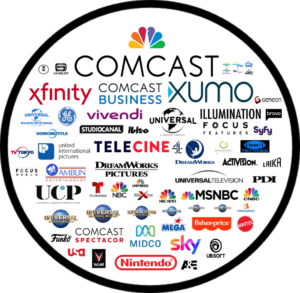
Beyond its unifying function, Xfinity also allows for consistent and targeted messaging across all marketing channels. By leveraging a single brand name, Comcast can ensure a cohesive brand image and voice, regardless of the platform used to reach customers. This consistent messaging helps to solidify Xfinity’s position in the market and fosters brand recognition among consumers.
Furthermore, Xfinity’s brand identity goes beyond the simple name. Comcast utilizes a consistent visual language and messaging strategy across all Xfinity-branded materials. This includes utilizing specific colors, fonts, and imagery to create a recognizable visual identity that resonates with consumers. By maintaining a consistent brand image, Comcast reinforces the core values and messaging associated with Xfinity, further strengthening brand recognition and trust.
2. Multi-Channel Marketing Approach
In today’s diverse media landscape, reaching customers across multiple channels is crucial for any successful marketing strategy. Comcast Corporation employs a multi-channel marketing approach to ensure its message reaches a broad audience and caters to various consumer preferences.
Firstly, Comcast utilizes traditional media channels like television commercials and print advertising to reach a wide segment of the population, particularly those who may not be as active online. These campaigns often feature celebrities and family-oriented themes to elicit positive emotions, build brand awareness, and establish trust with viewers.
Recognizing the ever-growing online presence, Comcast also actively engages in digital marketing strategies. This includes leveraging social media platforms like Facebook, Twitter, and YouTube to connect with customers directly. By creating engaging content and fostering online communities, Comcast builds brand loyalty and positions itself as a company that understands the needs and interests of its digital audience. Additionally, Comcast utilizes search engine optimization (SEO) to ensure their website ranks high in search results, making it easier for potential customers to find information about their products and services.
Finally, Comcast’s multi-channel approach extends to content marketing. They create informative and engaging blog posts, video tutorials, and social media content that educates consumers about their offerings and establishes Comcast as a thought leader in the industry. This valuable content not only attracts potential customers but also fosters trust and positions Comcast as a reliable source of information. By combining traditional media, digital marketing, and content marketing, Comcast ensures its message reaches a diverse audience across various channels. This comprehensive approach allows them to effectively connect with new customers, engage existing ones, and ultimately drive brand growth.
3. Bundled Packages and Promotions
Comcast understands the power of offering value to its customers. One of their key marketing strategies involves creating bundled packages that combine multiple services at a discounted price. This approach offers several advantages for both Comcast and its customers.
Firstly, bundling caters to the consumer desire for convenience and affordability. By offering various combinations of TV, internet, phone, and even home security in a single package, Comcast simplifies the decision-making process for customers and eliminates the need to manage multiple service providers. This one-stop shop approach not only saves time and effort, but also often translates to a significant cost-saving compared to purchasing each service individually.
Secondly, bundling promotes customer loyalty and reduces churn. When customers subscribe to a bundled package, they become more invested in the Comcast ecosystem. Switching to another provider would require them to find and manage separate services, making it less appealing and encouraging them to remain with Comcast. Additionally, bundled packages often include introductory discounts or free upgrades, further incentivizing customers to stay and enjoy the added value.
By providing a variety of bundled offerings and attractive promotions, Comcast creates a compelling proposition for consumers. This strategy not only helps them acquire new customers but also increases revenue by encouraging existing customers to subscribe to additional services within the bundle. From Xfinity Triple Play including TV, internet, and phone to Xfinity Double Play with TV and internet, Comcast offers various options to cater to different needs and budgets.
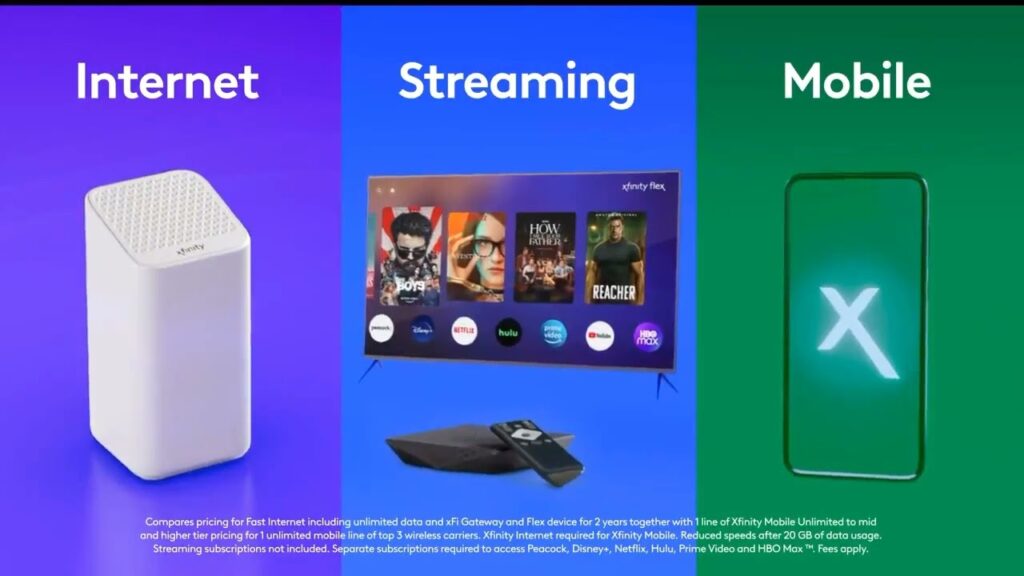
Combined with other marketing efforts, bundled packages and promotions are a cornerstone of Comcast’s success. By providing customers with valuable and convenient service combinations, they are able to attract and retain a loyal customer base in the competitive telecommunications landscape.
4. Customer Experience Focus
In today’s competitive landscape, exceptional customer experience is no longer a luxury, but a necessity. Recognizing this, Comcast Corporation prioritizes customer experience as its single most important product. This commitment manifests in various initiatives aimed at simplifying interactions, fostering loyalty, and building positive relationships with their customers.
Firstly, Comcast invests heavily in improving the customer experience. This includes dedicating hundreds of millions of dollars to initiatives like:
- Implementing the largest Net Promoter Score initiative in history: This metric helps them measure customer satisfaction and identify areas for improvement.
- Making over one million customer callbacks: By proactively addressing concerns and offering personalized support, Comcast demonstrates a genuine commitment to resolving issues and listening to customer feedback.
- Requiring all managers to call customers: This fosters a culture of empathy and accountability within the company, ensuring that leadership understands customer perspectives and challenges firsthand.
Beyond these specific initiatives, Comcast focuses on simplifying the overall customer journey. They have streamlined the process of ordering and using services, improved communication channels, and implemented measures to ensure swift and efficient resolution of any issues that may arise.
This customer-centric focus has yielded positive results. In 2018, Comcast was ranked #1 in customer satisfaction among both cable and satellite TV providers by J.D. Power, and among internet service providers by the American Customer Satisfaction Index. These accolades showcase the effectiveness of their customer-centric strategy.
Comcast’s commitment to customer experience goes beyond simply achieving positive ratings. It is a continuous process of adaptation, improvement, and building lasting relationships with their customers. By prioritizing their needs and consistently delivering positive interactions, Comcast aims to not only retain existing customers but also attract new ones in the ever-evolving market.
5. Strategic Partnerships
Comcast Corporation recognizes the power of collaboration and actively cultivates strategic partnerships to expand its reach, enhance its offerings, and enter new markets. These partnerships are a cornerstone of Comcast’s business strategy, fostering a win-win situation for all parties involved.
Firstly, acquisitions like NBCUniversal in 2011, and Sky in 2018, have significantly bolstered Comcast’s position in the media and entertainment landscape. These acquisitions granted access to esteemed brands like NBC, Universal Pictures, and Sky Sports, broadening Comcast’s content portfolio and audience base beyond internet and cable services.
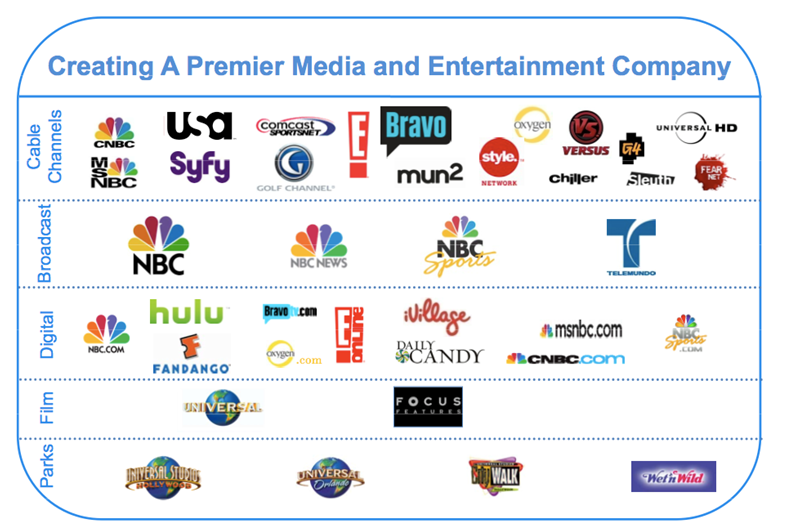
Secondly, partnerships with companies like Netflix and Twitter directly benefit their customers. By allowing Xfinity customers to seamlessly access Netflix and Twitter content through their cable boxes, Comcast offers greater convenience and value, potentially increasing customer satisfaction and loyalty.
Beyond the entertainment sector, Comcast has formed strategic alliances with diverse entities. Collaborations like the one with Ideal Systems allow Comcast to deliver innovative solutions like multi-screen, cloud-based video experiences, further enhancing its technological capabilities.
Comcast’s partnerships extend beyond purely commercial ventures. By partnering with organizations like Constellation for energy and renewable energy credits, Comcast demonstrates its commitment to sustainability and social responsibility, strengthening its brand image and reputation.
The diverse range of strategic partnerships employed by Comcast highlights the company’s commitment to constant growth and innovation. By collaborating with industry leaders and social impact organizations, Comcast expands its reach, provides valuable services to its customers, and solidifies its position as a leading force in the ever-evolving media and technology landscape.
6. Digital Marketing
In the age of ever-growing digital prominence, Comcast Corporation recognizes the importance of a robust digital marketing strategy. By leveraging various online channels, they aim to reach a wider audience, promote their offerings effectively, and engage with customers directly.
Firstly, Comcast prioritizes establishing a strong online presence. They maintain a comprehensive website that serves as a central information hub for potential and existing customers. Additionally, they boast a large and engaged following on various social media platforms like Facebook, Twitter, and YouTube. This allows them to share relevant content, respond to inquiries directly, and foster community interaction.
Secondly, Comcast actively utilizes targeted digital marketing campaigns. These campaigns leverage various online channels based on their specific goals. Examples include:
- “The Finders” campaign in 2021 employed a mix of television and online messages to reach advertising buyers, specifically promoting Comcast Spotlight’s targeted advertising services.
- “Xfinity Superfast” campaign in 2022 utilized social media, search engine optimization (SEO), and paid advertising to highlight the benefits of Xfinity’s high-speed internet service.
- “Xfinity Mobile” campaign in 2023 deployed similar tactics across social media, SEO, and paid advertising to promote their mobile phone service.
These diverse campaigns illustrate the adaptability of Comcast’s digital marketing strategy. By analyzing audience data and trends, they customize their approach to ensure each campaign resonates effectively with the targeted population.
Comcast’s marketing strategies are constantly evolving to adapt to the changing consumer landscape and technological advancements. By focusing on brand building, multi-channel marketing, value propositions, customer experience, and strategic partnerships, Comcast has established itself as a dominant force in the media and technology sector.
Marketing Mix of Comcast Corporation
Comcast Corporation’s success in the media and technology landscape can be attributed to a carefully crafted marketing mix (4Ps), alongside their diverse portfolio and commitment to customer experience. Let’s delve deeper into each element of the 4Ps and explore how Comcast utilizes them in extreme detail:
1. Product
Breadth of Offerings:
Beyond internet & cable: Comcast’s product portfolio extends far beyond just internet and cable TV under the umbrella brand Xfinity, offering:
- High-speed internet: Multiple tiers with varying speeds (e.g., basic, performance, ultra-fast) cater to diverse needs, from casual web browsing to online gaming and high-definition streaming.
- Cable TV: Extensive channel lineups curated for different interests, including sports packages, premium movie channels, family-friendly content packages, and international channels.
- Phone: Landline and mobile phone services, with options for bundled packages to simplify service management and potentially reduce costs.
- Home security and automation: Xfinity Home provides comprehensive security solutions, including smart door locks, cameras, and environmental monitoring systems, allowing for remote access and peace of mind.
- Mobile entertainment: Xfinity Mobile allows customers to stream their favorite content on the go, offering data plans and mobile device financing options.
- Theming and attractions: Through their ownership of NBCUniversal, Comcast expands beyond traditional telecom offerings, encompassing theme parks like Universal Studios and family-oriented entertainment experiences, further diversifying the product portfolio.
Innovation and Differentiation:
Staying ahead of the curve: Comcast constantly invests in product innovation, ensuring their offerings remain competitive and cater to evolving customer needs. This includes:
- Fiber optic networks: Deployment of fiber optic infrastructure allows for significantly faster and more reliable internet connections compared to traditional cable options.
- 5G advancements: Offering mobile phone services utilizing 5G technology provides customers with faster data speeds and improved network performance for streaming, gaming, and other bandwidth-intensive activities.
- Exclusive content and experiences: Partnerships with NBCUniversal grant access to exclusive content like shows and movies, theme park discounts, and unique entertainment experiences, differentiating Comcast from competitors and appealing to diverse customer segments.
2. Price
Value-Based Pricing:
Meeting customer needs: Comcast recognizes the importance of providing value to customers and employs various strategies to achieve this, including:
- Tiered pricing: Customers can choose from different service tiers (e.g., internet speed, channel packages) based on their individual needs and budget constraints. This allows cost-conscious customers to access basic services while offering high-end options for those seeking premium features.
- Bundled packages: Combining multiple services (e.g., internet, cable TV, phone) into a single package often provides a significant discount compared to purchasing them separately. This offers convenience and potential cost savings, incentivizing customers to subscribe to multiple services.
- Promotional pricing: Comcast frequently offers introductory discounts on new subscriptions, free upgrades to higher service tiers, and limited-time deals to entice new customers and encourage existing customers to upgrade or add additional services.
Competitive Analysis:
Staying competitive: While focusing on value, Comcast also monitors competitor pricing to ensure their offerings remain competitive in the market. This involves analyzing competitor pricing structures, service packages, and promotional offers to adjust their own prices and maintain a competitive edge.
3. Place
Extensive Distribution Network: Comcast boasts a robust distribution network, allowing them to reach millions of customers across the United States. This network includes:
- Direct sales channels: Xfinity stores and online platforms where customers can learn about services, compare options, and subscribe. These channels allow for personalized interaction and immediate service activation.
- Partnerships with retailers: Collaboration with major retailers like electronics stores and big-box chains allows for wider product reach through in-store displays and trained sales representatives who can answer customer questions and promote Xfinity services.
- Strategic alliances: Partnerships with smaller internet service providers (ISPs) in geographically dispersed areas enable Comcast to access new markets and expand their customer base, offering customers in these areas access to their services.
4. Promotion
Multi-Channel Marketing Approach:
Reaching diverse audiences: Comcast utilizes a diverse range of marketing channels to reach various audiences, employing both traditional and digital marketing strategies:
Traditional media:
Television commercials: Targeting a broad audience, Comcast utilizes TV commercials during prime-time slots and popular television shows to showcase their services and reach a wide demographic.
Print advertising: Strategic print advertising placements in newspapers and magazines relevant to specific customer segments (e.g., sports magazines for sports packages) allow for targeted brand messaging.
Sponsorships: Sponsorships of popular sporting events, teams, and entertainment shows increase brand visibility, associate Comcast with positive experiences, and potentially attract new customers who are fans of the sponsored entities.
Digital marketing:
Targeted advertising: By leveraging social media platforms and search engine advertising, Comcast can precisely target specific demographics, interests, and online behaviors, ensuring their message reaches the most relevant audience segments.
Search engine optimization (SEO): Optimizing their website and content for relevant keywords ensures Comcast’s website ranks high in search engine results pages (SERPs) when users search for internet, cable TV, phone, or related services. This increases organic traffic and drives potential customers to their website.
Content marketing: Engaging and informative blog posts, video tutorials, and social media content educate potential customers about their services, address common pain points, and establish Comcast as a thought leader in the industry. This builds trust and positions them as a reliable source of information.
Public relations:
Engaging with media outlets: Building positive relationships with media outlets allows Comcast to share their story, promote new products and initiatives, and address any issues publicly.
Community involvement: Participating in community events and philanthropic initiatives showcases Comcast’s commitment to social responsibility and builds positive brand image within the communities they serve.
Tailored Messaging:
Resonating with specific audiences: Comcast carefully tailors its messaging to specific audience segments based on demographics, interests, and needs. This personalization approach ensures the message resonates effectively, increasing engagement and conversion rates.
Examples include:
- Highlighting family-friendly content packages for families with children.
- Promoting sports packages to sports enthusiasts.
- Focusing on high-speed internet capabilities for gamers and online professionals.
- Creating targeted social media campaigns relevant to individual user interests and online behavior.
By strategically utilizing the marketing mix (4Ps) and extending their efforts beyond this framework, Comcast Corporation has established itself as a dominant force in the media and technology landscape. Their comprehensive approach allows them to cater to diverse customer needs, maintain a competitive edge, and continue to thrive in the ever-evolving market.
Also Read: Comcast Corporation – The Media Juggernaut With Ever-Expanding Domination
To read more content like this, subscribe to our newsletter
